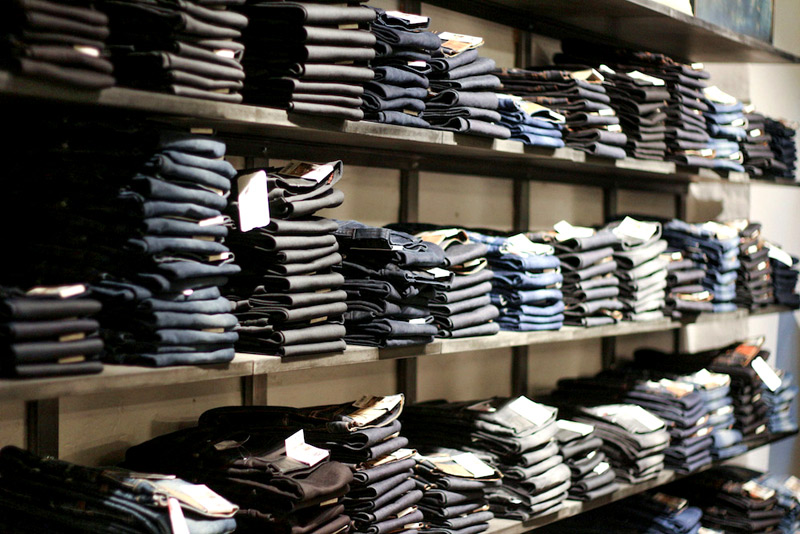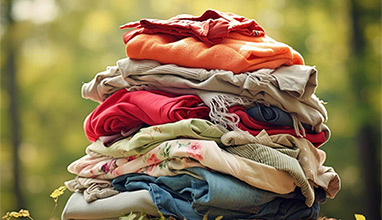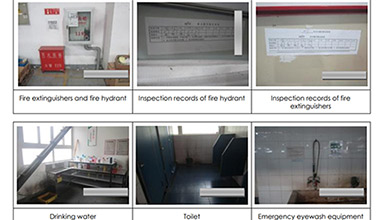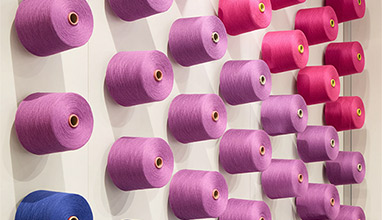8 shocking facts that show how unethical fast fashion companies are ruining the fashion industry
The fashion world is changing. The old fashion model is reshaping inevitably from slow to fast fashion. And although the slow fashion model has many disadvantages (about 18 months pass from the design of a garment to its production), many fast fashion companies have a negative effect on the fashion industry. In fact, the problem is not that fashion is becoming fast, but that there are many unethical practices involved.
1. Fast fashion companies design clothes that fall apart quickly
Thay persue a strategy called "Planned obsolescence". This means to design garments to become unfashionable, wear out, lose shape or fall to pieces easily to force consumers to keep buying new clothes. This is also referred to as "shortening the replacement cycle". Planned obsolescence is not valid only for fashion, in fact it was first seen in the automobile market in USA. In fashion, this strategy means that you buy cheap, low quality clothes designed to fall apart, sometimes even after the first wash. Somehow we got used to that, but we shouldn't! Our throwaway society is not healthy neither for us, nor the nature or the fashion business. We learned to accept this lack of longevity since we can buy a new item for the cost of a cake. But do you think that those "single use" clothes are worth buying? Vintage fashion is a proof that a garment can last many years if it is produced with care from quality materials. There is a brand that gives 30 Year Guarantee on its clothes. Isn't that sufficiently eloquent what quality we should expect?
Don't be fooled any more. Fast fashion can wind up costing you more than quality clothes, made by independent designers and small brands.
2. Slavery and disrespect of labour rights in clothing factories
The above strategy of fast fashion brands leads to the second one: Fast fashion companies press manufacturers for lower prices and they can't pay fairly to their workers.
On the 24th of April, 2013, the eight-storey Rana Plaza Building collapsed in the Savar area leaving more that 1,100 people dead and more than 2000 people injured.
"Despite a recent increase in their minimum wage, Bangladeshi garment workers still receive one of the lowest industry wages in the world , a fact which is further exacerbated by many factory owners failing to pay at the legal rate. Furthermore, many factory owners still deny the payment of benefits such as overtime, maternity leave and sick leave", says Baptist World Aid Australia in a report.
In India an estimated 200,000 girls and young women are trapped in Sumangali Schemes. The Sumangali Scheme takes place at the inputs production stage of the garment supply chain, where cotton is spun into fabric. A recognised form of child labour and human trafficking, these schemes primarily operate in the Indian State of Tamil Nandu, and most particularly in its western districts of Coimbatore and Tirupur.
Forced labour is a common thread in the cotton industry and one which ultimately continues to be perpetuated by the consumer desire for cheap clothing. The history of child labour in the Central-Asian nation is such that its cotton industry has become an area of global humanitarian concern and advocacy. In protest of the country’s use of child labour during harvest time, many major fashion brands and notable companies pledged to ban the use of Uzbekistani cotton in their products.
Sequins and beading-work on clothes also indicate child labour and slavery.

3. Fast fashion contributes to the decline of manufacturing in Europe and USA
According to Northern California public radio station KQED, in the 1960’s the average American household spent over 10% of its income on clothing and shoes (like $4,000 in today’s dollars). At that time roughly 95% of clothing manufacturing was made in the United States. The average American shopper bought fewer than 25 garments per year.
Now, all of those figures have flipped. Today, less than 2% of all clothing is manufactured in the U.S. The average household spends less than 3.5% of its income on clothing and shoes (less than $1,800). The most shocking number: Now, the average American shopper is buying roughly 70 garments per year. That’s nearly 3 times as many items as 50 years ago - and yet the annual household spending comes out to less than half of the amount spent in the 60’s.
30 years ago there were 4 million workers in Italian fashion industry, today they are about 350 000.
4. Discounts don't really exist. You pay for what you get.
Clothes in outlets have never been sold in a "regular" shop. Outlets make deals with designers to put designer labels on cheaply made clothes manufactured in other low-quality manufacturing factories.
5. There is lead and harmful chemicals on your clothing
In 2009, the Center for Environmental Health initiated legal action against major retailers for selling purses and other accessories with high levels of lead. They found excessive lead levels in purses from 16 of 21 stores visited. In June 2010, CEH announced that more than forty major retailers had agreed to eliminate lead risks to women from purses and other accessories. But investigations show that popular fast-fashion chains are still selling lead-contaminated purses, belts and shoes above the legal amount, years after signing a settlement agreeing to limit the use of heavy metals in their products. Lead accumulation in bones can be released during pregnancy, potentially harming both mother and fetus and has also been linked to higher rates of infertility in women and increased risks of heart attacks, strokes and high blood pressure.
It is well known that there are also pesticides, insecticides, formaldehyde, flame-retardants and other known carcinogens that reside on the clothes we wear. Cotton is one of the most chemically dependent crops in the world. While only 2.4 percent of the world's cropland is planted with cotton, it consumes 10 percent of all agricultural chemicals and 25 percent of insecticides. And in fact, the clothing and textile industry is the second largest polluter in the world.
What You Can Do: If you’re purchasing a wallet, handbag or other accessories, look for items made of natural materials rather than faux leather. If you are shopping for a suit, select only among those, made of 100% wool.
6. Fast fashion brands create an outrageous amount of waste every year
This is due to the extremely large production of clothes. Here are some facts:
15.1 million tons of textile waste was generated in 2013, of which 12.8 million tons were discarded.
1 000 000 garments are processed EACH DAY by companies like Zara and Forever 21.
Americans dispose of about 12.8 million tons of textiles annually.
Consumers in the United Kingdom have an estimated $46.7 billion worth of unworn clothes in their closets.
About 15% of fabric intended for clothing ends up on the cutting room floor. This waste rate has been tolerated industry-wide for decades.
It takes more than 5,000 gallons of water to manufacture just a T-shirt and a pair of jeans.
Textile industry is one of the top 3 water wasting industry in China, discharging over 2.5 billion tons of wastewater every year.
7. Fast fashion companies copy current fashion trends and produce them quicker than the originals
"Fashion brands steal design ideas all the time. And it’s completely legal", says an article in vox.com The article also shows real examples of how large brands get away with stealing designs from smaller companies because fashion is not fully protected under the copyright law. "Big fashion brands rip off small ones all the time, the most prolific offenders being fast-fashion companies, whose entire business model revolves around copying trends and bringing them to market quickly", says the reporter Chavie Lieber.
If you don't believe it, can you just think - Do you know the name of any fashion designer of a fast fashion company? The answer would be no, because those designers are not the ones that set the world fashion trends, they follow the fashion trends and copy them.
Here is what Austin Li, swimwear and lingerie designer says in quora.com about working at Zara: "Within two years, most of the floor designers are different. The ones that did well are now the mentors, and the ones that did poorly are now replaced. This keeps the design group young and eager to succeed, which also keeps the fashion sense of the company right in the frontier as a copy-brand".
8. Fast fashion distorts your sense of value.
A grande latte at Starbucks costs around $4. If you’ll spend $4 on a bit of caffeination that you drink in minutes (or maximum an hour), is it really that important that a t-shirt costs you only $3? The money you’re saving on that shirt has real consequences.
So what we can do as consumers?
Choose designer fashion. I don't mean world famous designers. There are so many young designers that need your support. They are the so called independent fashion designers. They stand with their name behind their designs.
Choose also local manufacturing or manufacturing close to your area, hand made products, organic materials, custom made clothing. Those are the most ethical and sustainable approaches in fashion nowadays.
Choose ethical fashion!
Hits: 29421 | Leave a comment
























